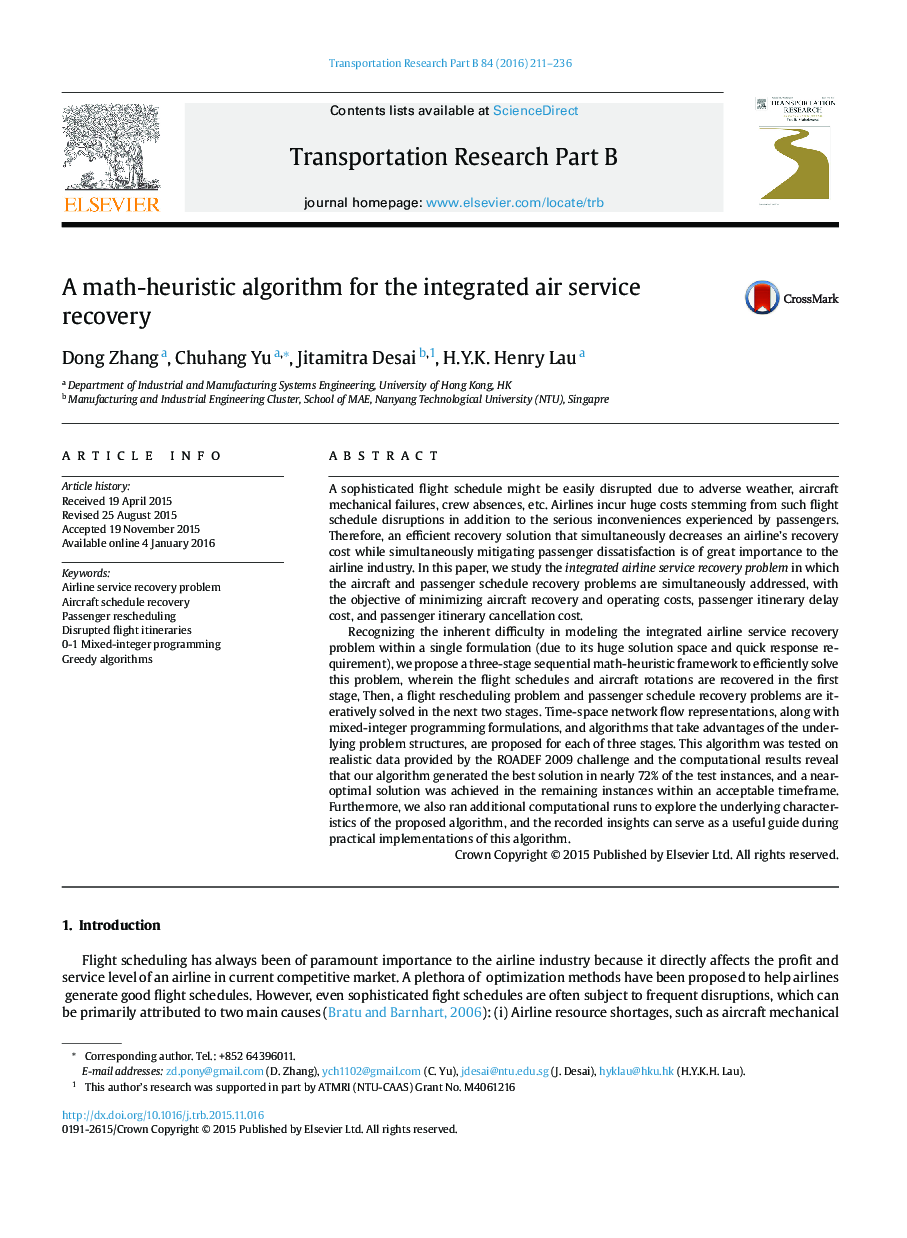| Article ID | Journal | Published Year | Pages | File Type |
|---|---|---|---|---|
| 1131648 | Transportation Research Part B: Methodological | 2016 | 26 Pages |
Hightlights•We propose a novel three stage math-heuristic algorithm for integrated air service recovery problem.•We propose efficient models and algorithms for each stage.•We compare our algorithm with other benchmark algorithm based on data provided by ROADEF 2009 Challenge.•We analyze the characteristic of our algorithm to provide a useful guidance in practical implementation.
A sophisticated flight schedule might be easily disrupted due to adverse weather, aircraft mechanical failures, crew absences, etc. Airlines incur huge costs stemming from such flight schedule disruptions in addition to the serious inconveniences experienced by passengers. Therefore, an efficient recovery solution that simultaneously decreases an airline's recovery cost while simultaneously mitigating passenger dissatisfaction is of great importance to the airline industry. In this paper, we study the integrated airline service recovery problem in which the aircraft and passenger schedule recovery problems are simultaneously addressed, with the objective of minimizing aircraft recovery and operating costs, passenger itinerary delay cost, and passenger itinerary cancellation cost.Recognizing the inherent difficulty in modeling the integrated airline service recovery problem within a single formulation (due to its huge solution space and quick response requirement), we propose a three-stage sequential math-heuristic framework to efficiently solve this problem, wherein the flight schedules and aircraft rotations are recovered in the first stage, Then, a flight rescheduling problem and passenger schedule recovery problems are iteratively solved in the next two stages. Time-space network flow representations, along with mixed-integer programming formulations, and algorithms that take advantages of the underlying problem structures, are proposed for each of three stages. This algorithm was tested on realistic data provided by the ROADEF 2009 challenge and the computational results reveal that our algorithm generated the best solution in nearly 72% of the test instances, and a near-optimal solution was achieved in the remaining instances within an acceptable timeframe. Furthermore, we also ran additional computational runs to explore the underlying characteristics of the proposed algorithm, and the recorded insights can serve as a useful guide during practical implementations of this algorithm.
